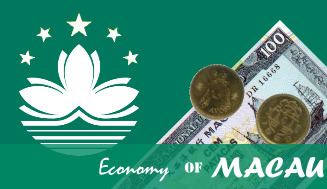 | ||
Transport in Macau includes road, sea and air transport. Road transport is the primary mode of transport within Macau as there are no railways. The main forms of public transport are buses and taxis. A light rail system is currently under construction.
Contents
Modes of transport out of Macau include ferries to Hong Kong and mainland China from two ferry terminals, as well as helicopter service to Hong Kong. International flights are available from Macau International Airport.
Road
Buses and taxis are the major modes of public transport in Macau. Bus services are frequent and inexpensive, linking the Macau peninsula, Taipa, Cotai and Coloane. Transmac, Transportas Companhia de Macau and the newly established Macau Nova Era de Autocarros Públicos, replaced former Reolian Public Transport Co., are the sole operators of Macau's bus services. Most hotels (four-starred or above) and gaming venues operate their own fleet of shuttle bus service between the Hong Kong-Macau Ferry Terminal, Taipa Ferry Terminal or Portas do Cerco (Macau's border to mainland China) and their premises.
Taxis are plentiful near the airport/Taipa ferry terminal, the Hong Kong-Macau and Taipa ferry terminal, and major gaming venues/hotels in the city though it is harder to get one during rush hours on the streets. Most of Macau's taxis have a black body with cream color top livery. Radio taxis are available for the black cabs.
In order to enhance the quality of taxi services, such as eliminate the language barrier between taxi drivers and passengers, the Tourist Office has provided most taxis with a destination guide which includes the names of the most requested destinations in Chinese, Portuguese and English.
The trishaw, a hybrid of the tricycle and the rickshaw, is a unique mode of transport in Macau, though it is mainly for sightseeing purposes but they were a type of mainly used transportation system before the 1970s because of their cheap price. They can easily be found next to Hotel Lisboa and the Macau ferry terminal waiting for passengers.
Railways
There are no railways in Macau (nor built during Portuguese rule), but the Macau Light Rail Transit system is under construction, with the opening of the first phase targeted for 2019. Similar to the Singapore Light Rapid Transit system, the tracks will be a mix of elevated guideways and underground tunnels, ensuring a dedicated right-of-way separated from road traffic. When completed it will serve passengers on Macau Peninsula, Taipa island, the Cotai reclamation area and Macau International Airport.
Proposals have been put forward to link Macau to the Chinese railway network by extending the Guangzhou Railway (or, possibly, Guangzhou-Zhuhai Intercity Mass Rapid Transit) to Cotai through Hengqin Island. However, no decisions have yet been made so far.
Zhuhai Railway Station of the Guangzhou–Zhuhai Intercity Railway terminates adjacent to the northern border entrance into Macau at Portas do Cerco.
Others
The Macau Maritime Museum used to have two sailing vessels (which were based on the ancient "junk" form but were remodeled) serving for touring trips between the inner and outer harbours. Along the trip, the crew would introduce the general lifestyle and customs of the local boat dwellers. However, due to the land reclamation works in the harbour and the maintenance of the boats, all trips have been suspended.
Roads and bridges
Macau has 321 kilometres of public roads, three bridges (viaducts) linking the Macau Peninsula and Taipa, and a tunnel through the Guia Hill linking the Horta e Costa area and the New Port Area (NAPE). The three bridges are (from east to west) the Friendship Bridge (Ponte de Amizade); the Macau-Taipa Bridge (Ponte Governador Nobre de Carvalho); and the Sai Van Bridge (Ponte de Sai Van).
The Lotus Bridge links Cotai with Hengqin New Area of Zhuhai. Unlike mainland China, where traffic drives on the right, traffic in Macau and Hong Kong drives on the left, therefore a special design has been used to build this bridge to facilitate the change in driving directions.
Roads are generally narrow at the heart of the city and parked cars are always found on both sides of the road. Traffic congestion has been a major problem throughout the day owing to the lack of efficient mass transit system and a relatively high car to population ratio.
There are three cross-border checkpoints, Portas do Cerco, Parque Industrial Transfronteiri, located at Ilha Verde, and Cotai for connection Mainland China. Except Portas do Cerco, operation time from 06:00 to 01:00, the others are in 24-hour operation.
There is an ongoing construction, the Hong Kong–Zhuhai–Macau Bridge, due for completion in late 2017. This 50 km link consists of a series of bridges and tunnels crossing the Lingdingyang channel, that will connect Hong Kong, Macau and Zhuhai, three major cities on the Pearl River Delta in China.
